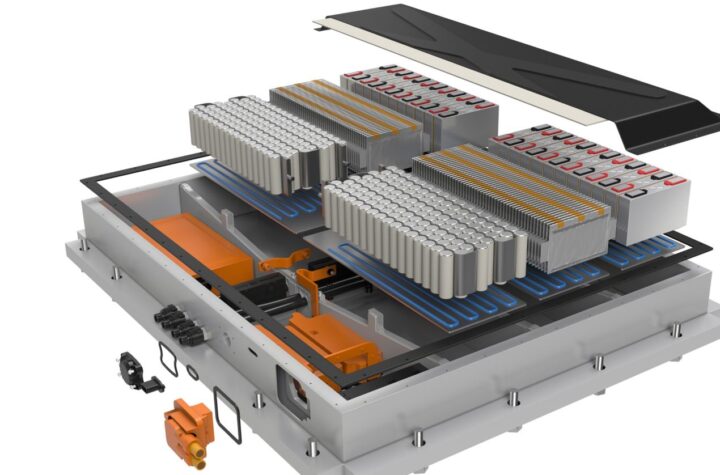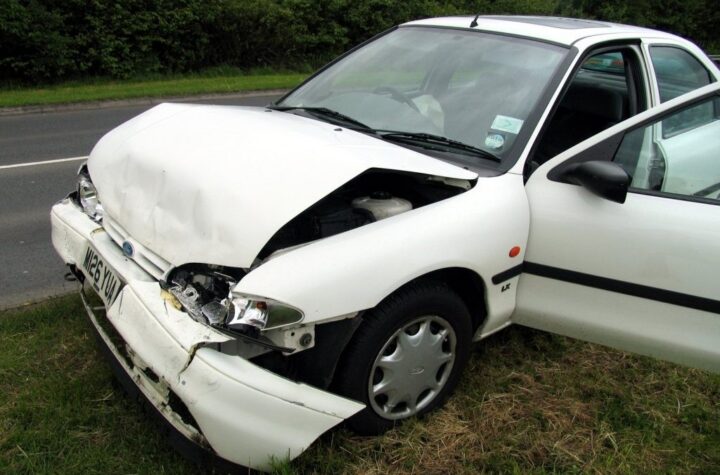
The South Korean Energine Corporation has developed a pneumatic-hybrid electric vehicle or PHEV Car.
The car is a hybrid vehicle driven by a compressed air engine combined with electric motor. The engines are similar to steam engines as they use the expansion of externally supplied pressurized gas to perform work against a piston. According to Energine, the PHEV technology can be adapted to engines currently using standard fossil fuel motor technology. This is supported by a battery-driven motor. Compressed air engine are two stroke – suction- expansion-exhaustion, while most modern car internal combustion engines are four stroke – suction-compression-explosion- exhaustion. Two stroke technology provides more power for the same capacity engine as a four-stroke.
The compressed air technology (CAT) engine is used whenever the car needs power (to start moving and to accelerate). The electrical drivetrain is used to maintain velocity and cruise. The compressed air engine is operated during the start, acceleration or going up a hill where the electric motor consumes a great deal of power rapidly. The compressed air engine converts back to the electric motor when the vehicle reaches a speed of 20-25 km/h. Under certain circumstances, the onboard computer will power up both engines at the same time.
“You could say our car has two hearts pumping. That is, we have separate motors running at different times, both at the time when they can perform most efficiently,” is the way Cheol-Seung Cho, CEO of Energine Corporation, described the system to CNN.
The hybrid needs less power than all-electric cars, according to Energine.
Environmentally friendly
As environmental concerns make alternative-fuel-powered cars a must, PHEV cars offer a viable solution. However, experts point out that air cars will only be as clean as the energy source used to compress the air that powers them. Energine counters that it is a lot easier to clean up that process than to clean up the internal combustion engine.
Energine, along with French company Moteur Development International, are the two major players in the compressed-air engine technology market. The compressed air for the engine is generated by a small, battery-powered motor, which also supports the PHEV’s electric motor, and is stored inside a tank. The electric motor comes to life once the car has gained normal cruising speed.
The only exhaust gas is cold air (−15 °C), which may also be used for air conditioning in a car. The source for air is a pressurized carbon-fiber tank holding air at around 20 MPa (3,000 psi, 200 bar). Air is delivered to the engine via a rather conventional injection system. The crank design within the engine increases the time during which the air charge is warmed from ambient sources and a two stage process allows improved heat transfer rates.
Lower production costs
Vehicle production costs are reduced by up to 20 percent as the technology does away with the need for a fuel tank, spark plugs and cooling systems. The electronic systems are also much less complex – and therefore less costly.
Energine filed patents in eight countries- the US, Canada, UK, Germany, France, Italy, Sweden and Korea for its compressed-air engine vehicle or CAV-2 from 1992. The engine has been developed in such a way so that it can be used not only in automobiles but also in aircraft, ships, submarines, agricultural and industrial engines, according to the company.
Partners wanted
The challenge for Energine is to get a large manufacturer to use its technology in its vehicles. Most automobile manufacturers have focused their efforts on environmentally-friendly vehicles in developing fuel-cell technologies or petroleum-electric hybrids. According to Energine, the advantages of a PHEV car are that the interiors are similar to a regular car, the maximum speed it can reach is 120 kilometers per hour. A PHEV engine can be retrofitted into a car.
Automotive Industries (AI) spoke to Cheol-Seung Cho, CEO of Energine Corporation.
AI: What is the status of your hybrid PHEV car? What has the commercial interest been?
Cho: The technology has been tested using a 20HP, 800CC internal combustion engine and an electric motor attached to a conventional lead battery. There has been remarkable progress over the last decade, and we have been able to achieve an average speed of 120 km/h for 30 minutes. Technically, it is possible to reach over 220 km/hour if the compressed air can be recycled through a compressor connected into the normal electrical network.
But, in order to roll out the technology, it would be necessary to establish an infrastructure with compressed air stations and electricity recharging outlets.
AI: Has any automotive major shown interest your PHEV technology?
Cho: There were several potential sponsors or investors who showed interest in obtaining a license or establishing a joint venture with the CAV/PHEV technology after we displayed a prototype car at the Geneva, Paris and Pusan motor shows during 2001. The negotiations were not concluded because we felt they did not fully understand the technology and we were absorbed with the development of a single cylinder CAV engine.
AI: MDI has entered into an agreement with Indian company Tata Motors to develop air-powered cars. does Energine have any such partners in Asia or elsewhere? Do you plan to sign up with such a partner in the near term future?
Cho: When we were ready to participate Geneva Motor Show, MDI invited us to attend the launch of their road testing of a prototype taxi powered by a CA engine. However, we believe that there may have been infringement to a series of patents registered by Energine from 1996 to 2007. We are taking the matter seriously and have referred it to our international patent attorney.
Presently we have no valid partnership with Asian companies or elsewhere. We are still planning to sign up with such partners, and our doors are open to any automotive major or investor which would want to enter into a reasonable License Grant/Joint Venture-Manufacturing project at any time.
AI: Air cars have not captured the attention fuel-cell powered cars and gas-electric hybrid cars have – what do you think the reason for this is?
Cho: We believe it to be a combination of lack of political will in countries where government is not willing to upset the big automotive companies, a lack of financial support and the absence of the infrastructure to support the technology
In addition, we have not had time to commercialize the technology Energine has been focused on research. However, we are sure that PHEV will be preferred to the fuel cell/gasoline-electrical hybrid car thanks to the fast advancement of Lithium ion polymer battery, as well as the electric motor and generator. We can compete with fuel-cell powered cars or gas-electric hybrid cars, and people will be attracted to the technology, we believe.
AI: Will Energine start the mass production of PHEV cars? What are your plans for using the technology for marine, space and other applications?
Cho: We can start mass production of single or multi cylinder engines for motor cars when we have the capital to build and equip the factory. Regarding marine applications, most existing single or multi cylinder engines used in applications such as sea rescue and other sea equipment in seabed mining.
It can also be used in hazardous applications such as chemical stores and plants, coal mines or explosives factories and airports where sparkles power is needed.
Engines for construction machinery such as forklifts, payloaders (skidloader) and excavators can be produced and easily converted.
There is also a military application. PHEV technology can be used in the defense industry not only avoiding heat-seeking missile but as an auxiliary driving system for submarines and battleships.
In the case of a CA Hybrid Fuel engine for aerospace application, we believe that a CAHF engine would be able to power a cruising aircraft according to the “fluid dynamic theory” based on “Bernoulli’s theorem”. This would require the development of a lightweight material to replace metallic air pressure tanks capable of withstanding a pressure of 300 bars.
Air engines are proven technology
The air engine, and its concept to use air as an energy carrier is not new. It has been used since the 19th century to power mine locomotives, and has been the basis for the propulsion of naval torpedoes since 1866. After this, it was used (and is still being used) in car racing to give the first power to start the car’s main power plant, the internal combustion engine (ICE). (source Wikipedia)












More Stories
DuPont materials science advances next generation of EV batteries at The Battery Show
How a Truck Driver Can Avoid Mistakes That Lead to Truck Accidents
Car Crash Types Explained: From Rear-End to Head-On Collisions